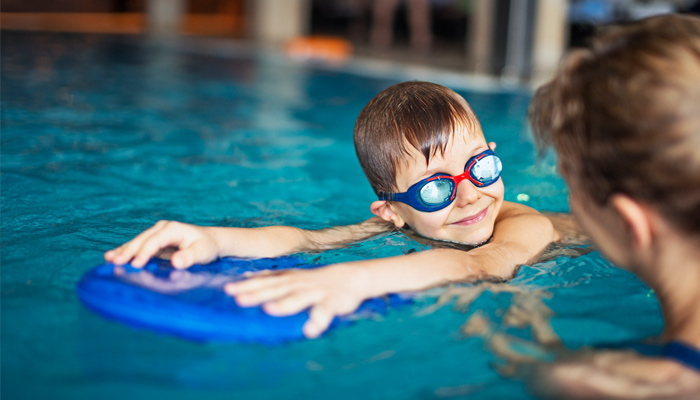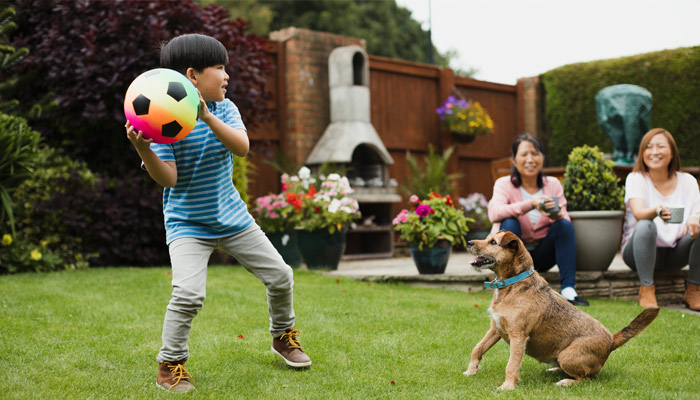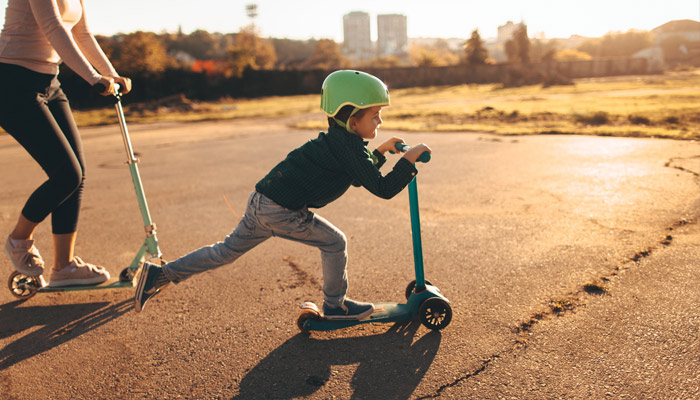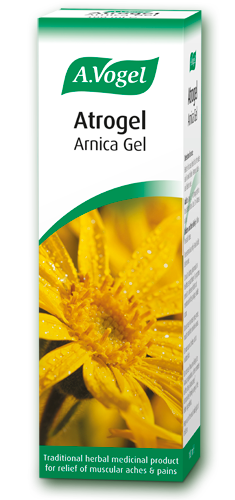Exercise levels among children
A 2011 survey of 1500 children aged 6-15 found that 10% could not ride a bike and 15% could not swim. Plus, whilst three quarters of those questioned said they owned a games console, only one third had a bike.1
In the week before the poll was conducted in 2011, just 46% of children had ridden their bikes and 34% had swam the length of a pool, but 73% had played a video game. This would suggest that modern day children are becoming less active, partly because of the lure of technology.

How much physical activity do children and teens need?
According to NHS guidelines, children need to do at least 60 minutes of exercise every day. This should involve a variety of activities such as swimming and outdoor play, as well as workouts that aid bone and muscle health such as dance or gymnastics.
It is also recommended that school-aged children spend no longer than 2 hours sitting at a time unless, of course, they are sleeping. Children under the age of 5, however, should be inactive for no longer than 1 hour at a time.2
Workout 1 – In the garden
Exercising in your own garden has lots of unique benefits. It doesn’t involve any travel, for example, which can often be a barrier to children participating in sporting activities, especially if parents don’t own cars, or they aren’t near any local facilities.
Another great thing about exercising at home is that it doesn’t cost a lot, if anything at all. Again, cost can limit the amount of exercise children can do, as well as the variety. This is more often the case if children have siblings as extracurricular activities for multiple children can become very costly.
Using the equipment you have to hand, however, (an old football, or some tennis rackets) you can make a sporting activity out of whatever is available.
Younger kids:
- Skipping
- Set up an obstacle course
- Scavenger hunt
Older kids:
- Football
- Swing ball
- Water balloon fight (in the summer, anyway!)

Workout 2 – At home
When the weather is cold or damp it may be necessary to switch to an indoor activity but, again, you needn’t venture too far for this.
If parents don’t have the time to drive their children to and from exercise classes, it can often prevent youngsters from being able to take part. By exercising at home, though, activities can be worked around everyone’s schedules.
Younger kids:
- Charades
- Twister
- Dance – put some music on and get creative!
Older kids:
- Sit ups
- Press ups
- Exercise videos
Workout 3 – In the park
Not everyone lives by a sports centre or swimming pool which can limit their ability to exercise but, no matter the size, most of us will have a park nearby.
Exercising in a park has the advantage that it is outdoors. This exposes us to vitamin D which is essential for maintaining strong bones and a healthy immune system. As a result of these added benefits, I’d always recommend getting children outdoors to exercise as much as possible.
As you can see from the list below, there are a huge range of activities that can be done in your local park.
Younger kids:
- Kite flying
- Tig
- Riding scooters
- Races – you can be creative here!
- Play
Older kids:
- Cycling
- Running
- Frisbee
- Bat and ball
- Dodgeball

Workout 4 – Somewhere new
Children can be discouraged from exercising if they are pushed to do an activity they don’t enjoy so it’s really important to keep things varied. Ask your child what they’d like to do or, if possible, just incorporate something a little different into their routine every so often. I’ve listed a few interesting activities below.
Younger kids:
- Roller skating
- Trampoline centre
- Ice skating
- An outdoor pool
- Bowling
Older kids:
- Visit a climbing wall
- Walking in a new spot
- Dry ski slope
- Kayaking
- Sailing
My Top Tip:
Apply 2-10 cm of Atrogel between 2 and 4 times daily.
|
How do I motivate my child to exercise?
Research has shown that children of active mothers are twice as likely to be active than children of inactive mothers. When both parents were active, children were 5.8 times as likely to be active as children of inactive parents.3
Therefore, the amount of exercise children participate in depends a lot on what the adults around them are doing. Parents can serve as role models, so if you want to encourage your children to do more, the first step is to make sure you are keeping active yourself.
As well as this, there are a number of simple steps you can take to help motivate children to exercise:
- Make sport fun
- Do short bursts of activity
- Make sure children know why they need to exercise – this is knowledge they will hold on to as they get older
- Find out what they want to do
- Limit screen time – they will have to find an alternative activity
- Encourage children to exercise and praise them when they do well
- Encourage children to try new activities
Children spend the majority of their time with family members so their approach to sport and activity has a huge influence over how the child feels about it, and what the child does too. If parents deem exercise to be important, the child is more likely to persist with it. This is important to remember as you take these steps to help children exercise more.
References
1 https://www.bbc.co.uk/news/education-13278317
2 https://kidshealth.org/en/parents/fitness-6-12.html
3 Moore, L.L., Lombardi, D.A., White, M.J., Campbell, J.L., Oliveria, S. A. and Ellison, R.C. (1991) ‘Influence of parents’ physical activity levels on activity levels of young children’, Journal of. Pediatrics, vol. 118, pp. 215–219.








